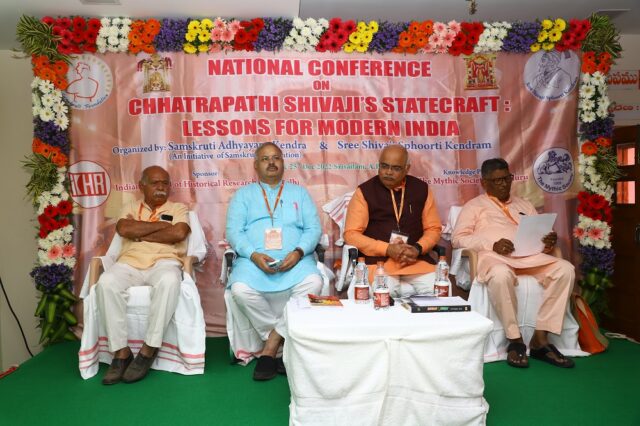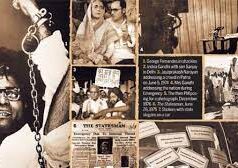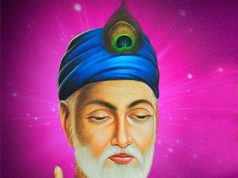
- National Conference conducted by Samskruti Foundation in collaboration with Shree Shivaji Sphoorthi Kendram on 24th & 25th December at Srisailam AP.
- The conference comprised of four technical sessions.
In the first session , the first Speaker Dr. S.L.Bapat of Bhandarkar Oriental Research Institute ( BORI), Pune spoke on ChhatrapatiShivaji’s contribution to administrative structure, systems, and restoration of religious faith. He began by first Shivaji initially on the conversion of the ‘Watanadari ‘(Jagirdari’ ) system to ‘Wetanadari”, that is state employee-like system. Thereafter he spoke of the ‘purification’ of the language which had become almost personalized, back to itssanskritized version and a language understood by the subjects. A formal lexicon of over 1100 words replacing Persian words with Sanskrit words was made and brought in use. Realizing That changing language of a people tentamounted to changing their ‘Nationality’, he took this significant step of re-indianization of the Marathi language. He stated that ‘Shivaji’s regime was not secular a narrative coyly promoted by some brand of History, butoriented towards a ‘HaindviSwarajya’. His army was far less expensive with a high fighting to – non fighting men’s ratio, much more light and mobile and suited well to his core strength. H ealso issued a ‘Rajamudra’ in Sanskrit , a version of which has been recently adopted by our Navy.
The second speaker, Sri Girish Joshi from Bhopal, spoke on the Public System delivery of ChhatrapatiShivaji. He said thet the objective of ChhatrapatiShivaji’s rule was to deliver effective service to the people.ChhatrapatiShivaji said that it was a divine service to do that and that he was a means to implement God’s will of restoring the sanatana values and faith. He was a king who ‘did’ rather than just sermonize. He had a transparent system for treasury measurement, plugging losses. He took care of the old, the sick and the disabled. There was no nepotism. There was justice and no relaxation in punishment because of any high post held, and above all, a fair and just governance for all.
The third speaker Dr. Pradhan of GGUniversity, Bilaspur spoke on Organization of Civil Service for effective public service delivery. He said thatChhatrapatiShivaji appears to have realized that- Culture is Identity. Shivaji can be credited with the creation of the modern Hindu Swaraj. Inclusive democracy appears to be ChhatrapatiShivaji’s Mantra. He created a great layer of authority commands for effective rule. His village administration was in itself a reflection of the larger state administration.
The Chairperson summed up the gist and appreciated the speakers for their deep study of ChhatrapatiShivaji.
The second session was chaired by Dr. C. Umamaheswara Rao. He requested the audience of learned people to join the national mission of rejuvenation of the nation based on ChhatrapatiShivaji’s ideals.
The first speaker in the second session, Sri N. Ksheerasagar of SamskrutiAdhyayanaKendra spoke on the System of Land Measurement and Record Management of Shivaji. He began by stressing how ChhatrapatiShivaji rationalized land measurement by introducing state certified standard length rods as a measurement of length to accurately estimate land holdings. He Quoted from ‘Chanakya’sArthasastra to show how this was a part of the duties of a King which was implemented by Shivaji. This measure helped in correctly determining the Tax liability of the farmers in association with other land parameters like soil quality and rainfall etc.
The next speaker Dr. U.M. Chaudhari, also of SamskrutiAdhyayana Kendra spoke on the sensitivity ChhatrapatiShivaji displayed towards the peasant farmers , which was lacking in those turbulent times. ChhatrapatiShivaji ensured that farmers didn’t have to suffer when the crops failed due to draught, famine, floods, pest or other loss causing agents and man-made disasters. He compensated the farmers in kind and not in cash to ensure effectiveness of relief. His practices are worthy of practice by the current rulers in body and spirit.
The third speaker Sri Sridhar Throat, a historian from Pune, spoke on ‘Tax Reforms implemented by ChhatrapatiShivaji . He summed up the great reforms introduced by Shivaji which drastically altered the quality of the state financing system. Shivaji started with almost nil in his coffers , to earning about Rs. 10 Crores for the public treasury which was a huge sum in those days. He plugged leakages and also avoided unnecessary pompous show of royal power and ite entailing expenses.
The chairman summed up briefly the presentations and emphasized the need for us as a people to become more aware of the need to work for such reforms in our contemporary life.
The third technical session was chaired by Dr. Anuradha Kulkarni, a history scholar from Pune who is associated with ‘ItihasSankalanaSamithi’.She welcomed the guests and said that to authenticate history narratives one needs documents, without which it does not carry credibility and may only be conceived as personal opinions.
The first speaker, Dr. I.Lakshmi, (Rtd.) prof. Of History, HCU, speaking on ‘ Women’s Security under Shivaji’s Rule’ stated that some historians of questionable credentials and who are motivated by ideologies inimical to India portray Women as the oppressed and Men as the oppressors in India. In the society, women and men existed together and it is unfair to depict women in Isolation as the victims. She further highlighted the role of Shivaji’s mother in moulding his character. Shivaji owed many aspects of his character to the training and education he got from his mother. She also ensured he imbibed the spirit of protecting the honour of women and treat them with dignity.
The next speaker, Dr. VidyaDeodhar, a literature doctorate and an author in Marathi and Hindi languages, read a paper on women’s contribution to all fields of life. She said that women have been contributing right from the Vedic times and the contribution through the ages right to date has been recognized. We must encourage womwn and create a conducive environment like the one created by Shivaji.Ensuring their dignity and honour is the first step for which ChhatrapatiShivaji can serve as an Ideal.
The next speaker, MedhaBhaskaran a prolific author in English and Marathi spoke on ‘Rules for Promoting Sensitivity towards women’, said that Shivaji was moulded right from his childhood in this by his mother. She ensured that ChhatrapatiShivajiunderstoor the plight of women when unsympathetic cultures treat them in an inhuman fashion, and that protection of dignity of women should become the one of the priorities of his rule. Mrs.Bhaskaran quoted how did not spare offenders and ensured harsh and exemplary punishment for offenders.
The chairperson then summed up the presentations by the speakers. She further showed that there is documentary evidence to support most of the sagas showing ChhatrapatiShivaji’s dignified treatment of women. Another noted point was that ChhatrapatiShivaji respected the spirit of even those who went against or fought against him, and never dealt them in a disrespectful manner and appreciated their bravery. However, in passing she reminded the importance of authenticating history with documents without which glorification of anyone is not in order.
The last Technical (session) Session -4 held on Day 2 (25.12.2022), dealt with the military Strategies of ChhatrapatiShivaji. It was chaired by Lt. Gen. K. Ramachandra Rao who said that ChhatrapatiShivajiMaharaj can be credited with starting the modern form of Indian Army as many of his initiated practices are followed today.
The next Speaker Sri Vikram SinghMohite spoke on ‘ChhatrapatiShivajiMaharaj’s Military strategy and tactics’. He said that Shivaji’s army was extremely suited to his times, the geographical terrain of his lands. He raised a light and fast moving army, far superior to the spoeed of his Mughal or Adilshahi adversaries. He specialized in infantry whose speed of a40 steps per minute beats even the current world standard of 120steps a minute. The personnel were his army personnel and were not attached to any other Jagirdars or lords, neither were they mercenaries. They showed utmost bravery with the result that they won against numerically far superior and better equipped armies. The arms used suited the physique and capacity of his fighters well. He recruited the hardy ‘Mavalas’ and turned them into formidable fighters. His ‘Southern Campaign’ during which he came to Srisailam was also to expand ‘Haindvi Swaraj’ and send a message to the rulers s of Delhi.
The next speaker, Brg. Hemant Mahajan, speaking on ‘Army. Armed Forces and Ordnance Management’ gave an exhaustive account of the contribution of ChhatrapatiShivajiMaharaj to the nation. He said that the weapons were mostly local, from which the current ‘Indigenous arms ‘policy should draw inspiration.ChhatrapatiShivajiMaharaj installed fearlessness in the minds of his army who did great heroic deeds contributing to his success. He chose the mode and time of the fighting, strategically outmanoeuvring the enemy, which contributed a lot to his success.
The last speaker, Vice Admiral MurlidharPawar very eloquently narrated the unique nature of the development of navy. Neither the Mughals, nor the Adilshahi Sultans showed any aptitude for developing navies. eNavy is a different ballgame and it is amazing how he learned it so fast. He was 200 years behind the Portugueseand therefore strategically acquired know-how from Europeans. He developed ‘Shallow Water’ navy well suited for his western coast. His men learned the art of ship building. His naval strategies wererecognized by his rivals of the day. As if a visionary foreseeing future developments, had he lived for a few years more, the history of India would have been different.
The chairman summed up the presentations.
The section on Military Strategy was the most appreciated, informative and applauded part of the technical presentations.














